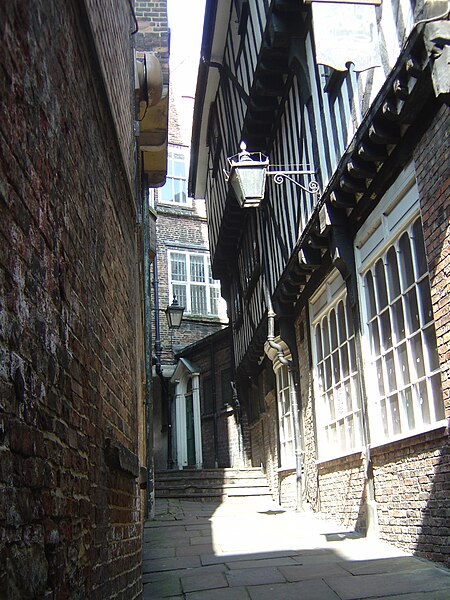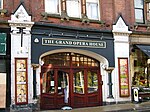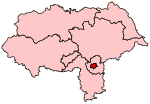Snickelways of York
Streets in YorkTourist attractions in YorkUse British English from January 2017

The Snickelways of York, often misspelt Snickleways, are a collection of narrow streets and alleys in the city of York, England. The word Snickelway was coined by local author Mark W. Jones in 1983 in his book A Walk Around the Snickelways of York, and is a portmanteau of the words snicket, meaning a passageway between walls or fences, ginnel, a narrow passageway between or through buildings, and alleyway, a narrow street or lane. Although the word is a neologism, it quickly became part of the local vocabulary, and has even been used in official council documents, for example when giving notice of temporary footpath closures.
Excerpt from the Wikipedia article Snickelways of York (License: CC BY-SA 3.0, Authors, Images).Snickelways of York
High Ousegate, York Bishophill
Geographical coordinates (GPS) Address Nearby Places Show on map
Geographical coordinates (GPS)
| Latitude | Longitude |
|---|---|
| N 53.958 ° | E -1.082 ° |
Address
High Ousegate 5
YO1 8RZ York, Bishophill
England, United Kingdom
Open on Google Maps









